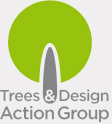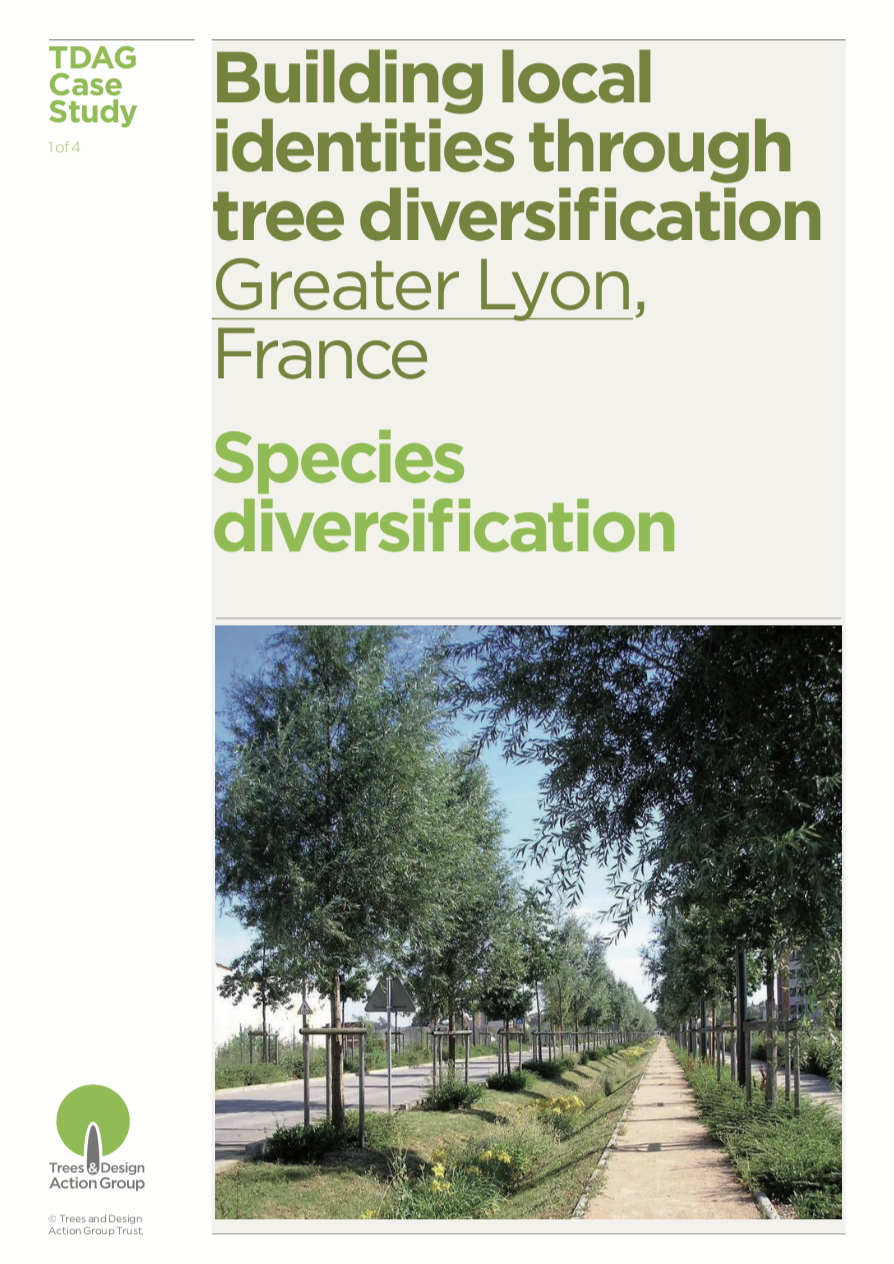| In the mid-1990s, plane trees represented over 52% of the tree population managed
by the Greater Lyon Authority (GLA). In 2018, this had been brought down to 21.7%, while the overall number of species found in hard landscapes in the Lyon area had increased by 80%, with over 280 different species and 94 genres represented. This stark increase is a result of a strategic commitment to diversification. The goal set in the GLA Tree Charter is that, for trees in highways and other public hard landscapes, no single tree species should represent more than 10% of the whole. To deliver this, the GLA monitors the composition of its tree population at a strategic level. For each neighbourhood, it takes cues from the existing character of
the landscape to agree a local plant palette: this combination of species is used to help build upon and reinforce local identity, ensuring that the strategic 10% diversity goal does not result in a loss of local coherence and character. |
According to Frédéric Ségur, the GLA tree specialist, the GLA’s success in greatly diversifying the population of trees found in Greater Lyon’s streets and civic spaces is the result of three key factors: “First, we’ve got to assume control of not only strategic policy but also procurement of design and management, allowing us to set some objectives at all three levels that are congruent and mutually supportive. Second, we’ve got to build strong relations with our suppliers. We work with contractors that supply trees, and the climate of trust we’ve created has enabled them to stimulate the local nursery grower to increase the quality and diversity of their production. While, back in 2007, less than 50% of the newly planted trees were of local provenance, this is now close to 80%. Third, we do not prescribe a plant palette to designers. The 10% objective set in the tree charter is used as a means to initiate a dialogue: it sets a framework for collaboration rather than dictates a solution. For each scheme that is not done in-house, designers come to us to validate their plant palette and we use this opportunity to make suggestions with alternatives options where we feel inappropriate choices have been made given local climate, soil, conditions or space availability.”
| Project team: | Greater Lyon Authority, Trees and Landscape Unit (of the Highway Department). |
| Completion date: | 1992-on-going. |
| Further information: | Greater Lyon Tree Charter (English version) |
| Download: |
| ||
| Version: | This case study was originally published in Trees in Hard Landscapes: A Guide for Delivery (2014). Version 1.1 above was released in March 2018. |
| Author(s): | This case study was drafted by Anne Jaluzot, based on site visits and interviews with Frédéric Ségur, Landscape and Arboricultural Manager at the Greater Lyon Authority. |


 RSS Feed
RSS Feed